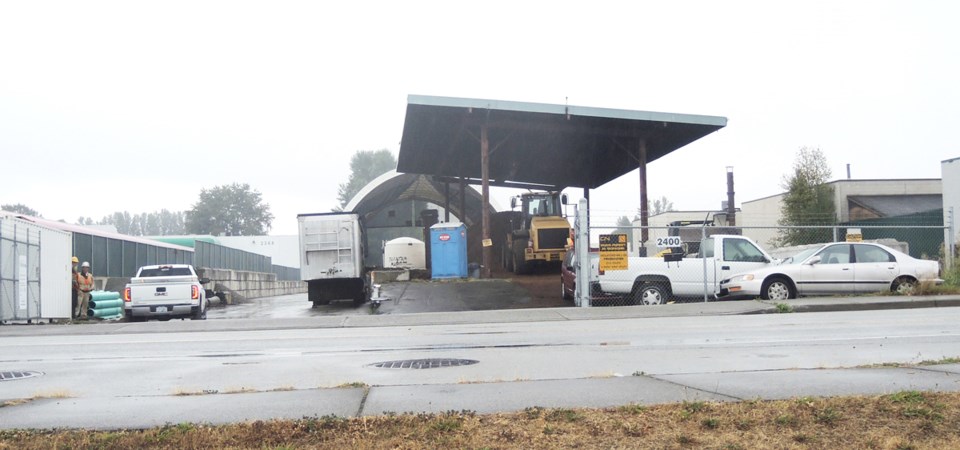Over the last couple of years, a CN Rail facility in north Richmond has been causing a bit of a stink with its neighbours.
It appeared that the air- and water-polluting fallout from CN’s apparently “environmentally-friendly” efforts to grind and recycle creosote-soaked, wooden rail ties was addressed, however a fresh complaint of toxic air has recently emerged.
Back in the summer of 2014, when the facility — which sits adjacent to the rail track near No. 5 Road and Vulcan Way — started recycling the ties to create an alternative fuel source for cement production, the city and Metro Vancouver both fielded numerous complaints from neighbouring businesses.
Environmental and health hazards from airborne dust from the creosote-treated ties blowing onto neighbouring properties and impacting air quality and dust blowing or leaching into surrounding waterways and city storm systems were among the concerns.
The railways fall under federal jurisdiction and are not subject to city or regional bylaws but, according to both the City of Richmond and Metro Vancouver, the majority, if not all, of the issues were addressed by CN by the end of 2015 and no further complaints were received — until now.
Ten days ago, Metro Vancouver received a fresh complaint about air quality.
One neighbouring businessman, who asked not to be named, claims “toxic dust” is still being sent into the air from the facility, which does appear to have a semi-permanent roof covering at least part of its operations.
“People working near there are breathing this in. Some businesses near there have sent staff home feeling sick from breathing the dust,” said the businessman.
“The health club across the street has people breathing heavily while they workout (thus) breathing in this contaminated air.
“Also, there is this creosote-contaminated sawdust flowing into storm drain catch basins nearby and creosote is leaching into the ground water. This has been reported to the City of Richmond by several people, but the city says that it can do nothing about it as railways are federal government jurisdiction.
The News contacted Richmond Sports and Fitness, which sits opposite the CN facility. The staff member answering the call was aware of the issue, but no one from management returned the call by press time.
The complainer also stated that CN “is now planning to expand the operation to three more grinder units, tripling the output of carcinogenic creosote dust and pollutants.”
A spokesperson for CN said the company was aware of the historical complaints as well as the recent one, but added there are no plans to expand its rail tie recycling operations.
“The program is a partnership with a third party that keeps out-of-service rail ties from being landfilled,” said Kate Fenske, CN’s media relations spokesperson for Western Canada.
“The ties are repurposed in an environmentally-friendly manner to create an alternative fuel source for cement production.
“CN manages the facility in compliance with applicable laws and regulations and there has been no expansion of the operation.”
City of Richmond spokesperson Ted Townsend said a team of city staff had been working on an ongoing basis with CN Rail and “satisfactorily addressed” the aforementioned environmental concerns.
Metro Vancouver said it received seven complaints in 2014, when the facility first opened, and, on July 28, 2014, CN was informed that emissions from its operation were “unacceptable” and a request was made it take “immediate steps to control emissions.”
In August of the same year, CN presented an action plan with a number of measures, including installation of wind breaks, use of water cannons, water trucks and street sweepers, replacing grinding equipment with equipment that generates less dust and suspending operations when off-site dust migration is observed.
According to Metro Vancouver, CN fulfilled the commitments stated in the plan and in 2015, no complaints were received.
Metro Vancouver said it is now in the process of looking into the most recent complaint.
Creosotes are carbonaceous chemicals, formed by the distillation of various tars. They were used in the past to treat material such as wood and rail ties. However, it is rarely used today and is not on Metro Vancouver’s list of substances banned from landfills.



